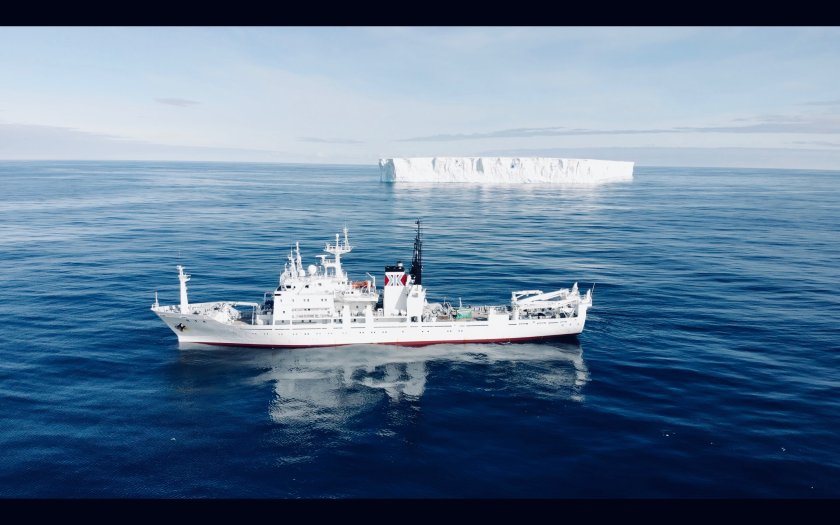category_news
Surface water sampling reveals large numbers of juvenile krill undetected by conventional monitoring methods
In 2018/2019, researchers of Wageningen Marine Research joined the Japanese research vessel Kaiyo-maru (Fisheries Agency Japan; FAJ) on an Antarctic expedition to sample the upper surface waters with the Surface and Under Ice Trawl. Results showed that a large part of the Antarctic krill population resided in the upper two meters of the water column.

The upper surface layer is usually missed by standard survey nets or acoustics that are used in monitoring. The individuals that remained close to the surface were almost all juvenile krill, in contrast to deeper water layers in which adult individuals were also found. During the second half of the expedition, the krill disappeared from the upper surface and were only found in deeper waters and closer to the continental shelf. This shift in distribution is likely caused by a combination of environmental factors and the progression of time.
Together with Japanese and US colleagues, the researchers published the results of their work in the journals Progress in Oceanography and Frontiers in Marine Science.
Zooplankton
There was a special interest for studying distribution patterns of Antarctic krill because this is a commercially harvested species. Therefore, the results are important for fisheries management, in the Southern Ocean carried out by CCAMLR (Commission on the Conservation of Antarctic Marine Living Resources). But apart from Antarctic krill, there were many other zooplankton species that inhabited the upper surface waters. An amphipod with the beautiful name Themisto gaudichaudi was also very abundant. In contrast to the krill, relatively large numbers of this animal remained in the upper surface throughout the expedition.
Such information can be useful to understand variation in the food web structure in different areas of the Southern Ocean. It may, for example, explain shifts in distribution patterns of predators such as birds or whales, or reveal the importance of Themisto gaudichaudi as a food source for surface-feeding predators in the absence of the assumed main food source (krill). Results of the studies were presented as a meeting document at the CCAMLR working group that recently met in Leeuwarden.
Publications
- Schaafsma FL, Driscoll R, Matsuno K, Sugioka R, Driscoll S, Van Regteren M, Sasaki H, Matsukura R, Van Franeker JA, Murase H. (2024). Demography of Antarctic krill (Euphausia superba) from the KY1804 austral summer survey in the eastern Indian sector of the Southern Ocean (80 to 150°E), including specific investigations of the upper surface waters. Frontiers in Marine Science 11: 1411130.
- Schaafsma FL, Matsuno K, Driscoll R, Sasaki H, Van Regteren M, Driscoll S, Matsukura R, Sugioka R, Urabe I, Murase H, Van Franeker JA (2024). Zooplankton communities at the sea surface of the eastern Indian sector of the Southern Ocean during the austral summer of 2018/2019. Progress in Oceanography 226: 103303.